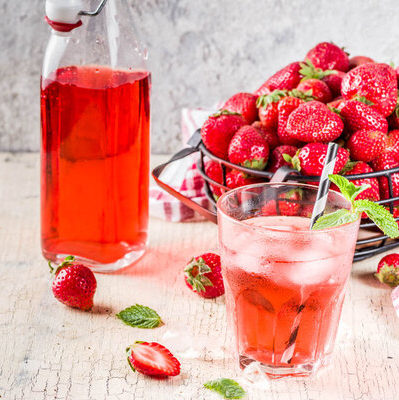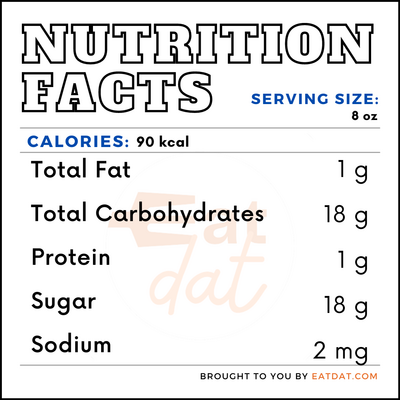
Strawberry Juice
What is Strawberry Juice?
Strawberry juice is the liquid extract of the strawberry fruit. Because the fruit is so juicy, this beverage can also be made by blending strawberries with water and may be strained to remove the pulp and other particles, or not. Strawberry juice has a rich and sweet taste and is a brilliant red color.
- Strawberry juice is often used to prepare cocktails, because it adds sweetness to the drink.
- Strawberries are extensively used in preparing jams, jellies, ice cream, milkshakes, and other items in addition to juice.
The most popular juice brands in the world are:
- Del Monte
- Apple & Eve
- Langer’s
- V8
- Tropicana
- Frooti
- Ocean Spray
- Ceres
- Minute Maid
- Simply Orange
Origin of strawberry juice
Historically, strawberries were considered to have medicinal value in some civilizations including ancient Rome. However, the fruit was not tasty or juicy in ancient times and people did not eat it in large quantities. It was the French who first began to cultivate wild strawberries in the 1300s. Nonetheless, they remained mostly ornamental until the 1700s, when a French spy brought back a Chilean strawberry to Europe. This was then cross-bred with local strawberries, resulting in the modern strawberry. All varieties that we eat today have this common ancestor.
Nutrition
This fruit juice contains vitamins A and C, as well as iron, calcium, and potassium in decent quantities. The nutritional profile for an 8 oz serving is:

Drinking strawberry juice can protect the heart, increase HDL cholesterol, lower blood pressure, and guard against cancer. This fruit has high levels of antioxidants and a number of bioactive compounds such as flavonoids, anthocyanins, and phenolic acids. These have the ability to protect the body against cardiovascular diseases, type II diabetes, obesity, neurodegenerative diseases, and inflammation. However, this juice also contains high levels of sugar, has a high glycemic index, and lacks fiber.
Commercial production
China is the top strawberry producing country in the world with an annual production of 3,801,865 tons. The USA, Mexico, Egypt, Turkey, Spain, and Russia are other major producers of this fruit.
The strawberry market is not consistent and can have low and high availability, depending on the market situation. When pricing drops due to competition, the harvest is frozen for baking or confectionaries or pureed for juicing. Sometimes, strawberry crops are even abandoned on the field due to lack of demand. This leads to seasonal peaks in the fruit, thus reducing the overall juice output.
To commercially produce strawberry juice, strawberries are inspected and cleaned prior to pulping. Then, the cap, leaves, and other impurities are removed before being pulped again. Next, the puree is put into large containers, de-aerated, and frozen. After that, an enzyme treatment separates the strawberry juice through either a cold press or hot press treatment. Finally, centrifugation and filtration are completed before bottling.
Strawberry juice recipes
Strawberry juice can be consumed as a beverage or used in different dishes. Here are a few recipes:
- Strawberry Juice
- Strawberry Cake
- Strawberry Yogurt
- Pepper-crusted Steak with Strawberry Zinfandel Sauce and Orange-Mustard Aioli
- Salmon with Strawberry Salsa
- Strawberry Syrup
FDA regulations
The Food & Drug Administration classifies strawberries as a raw agricultural commodity, and therefore, regulates their growing, harvesting, packing, and holding. The organization also has a standard of identity for canned strawberries. Strawberry juice must have at least a 8.0 percent concentration, according to FDA regulations.
References
- R.P. Bates, J.R. Morris, and P.G. Crandall; Principles and practices of small and medium – scale fruit juice processing, Food Science and Human Nutrition Department, University of Florida United States
http://www.fao.org/3/y2515e/y2515e16.htm - Vern Grubinger, Vegetable and Berry Specialist, History of the Strawberry, The University of Vermont
https://www.uvm.edu/vtvegandberry/factsheets/strawberryhistory.html - Giampieri, Francesca et al. “Strawberry as a health promoter: an evidence based review.” Food & function vol. 6,5 (2015): 1386-98. doi:10.1039/c5fo00147a, https://pubmed.ncbi.nlm.nih.gov/25803191/
